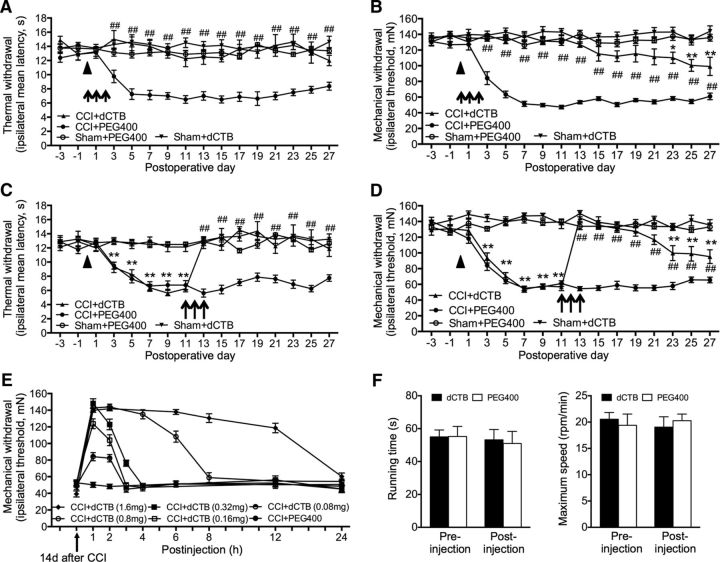Figure 6.
Spinal administration of dCTB inhibits induction and persistence of neuropathic pain after CCI. A–D, Effects of repetitive intrathecal dCTB in the early phase (A, B) or late phase (C, D) on the induction and established thermal hyperalgesia (A, C) and mechanical allodynia (B, D). Solid triangle indicates surgery. Rats: n = 8 in each group. Each administration of dCTB (1.6 mg) is indicated by an arrow on the corresponding time point. Two-way ANOVA, F(3, 448) = 212.8, p < 0.0001 (A); F(3, 448) = 572.5, p < 0.0001 (B); F(3, 448) = 181.2, p < 0.0001 (C); F(3, 448) = 627.3, p < 0.0001 (D), *p < 0.05, **p < 0.01 versus sham+PEG400; #p < 0.05, ##p < 0.01 versus CCI+PEG400. E, Dose-dependent analgesic effect of dCTB. Six different doses dCTB was injected, respectively, on the 14th day (arrow) after CCI and its analgesic effect was tested in the following 1–24 h. F, dCTB, at the maximum dose used (1.6 mg), did not affect the locomotor activities evaluated by the running time and maximum speed in ROTA-ROD experiment in naive rats. Individual Student's t test was used to test the possible difference between the preinjection and postinjection of dCTB or PEG400 in each of the groups. In A–F, n = 8 rats were included in each of the groups.

